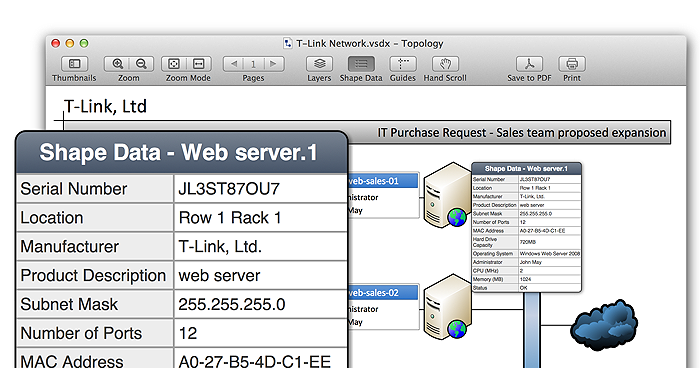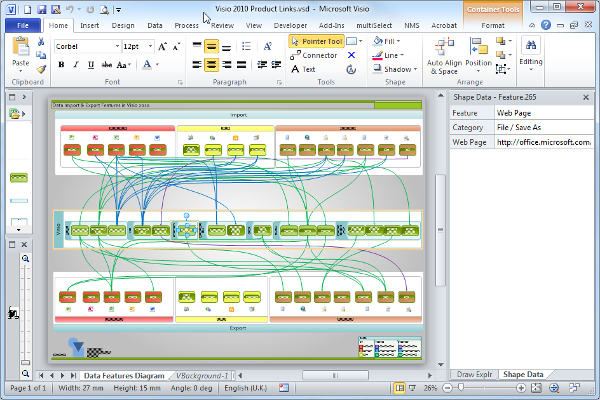

- #.vsd viewer and xp pdf#
- #.vsd viewer and xp Patch#
- #.vsd viewer and xp code#
- #.vsd viewer and xp zip#
- #.vsd viewer and xp windows#
The dropper then extracts the encrypter binary from its resource R/1831, writes it to the hardcoded filename %WinDir%\tasksche.exe, and then executes it. The System event log will also display event ID 7036 indicating that the service has started. This can be observed in the System event log as event ID 7036, indicating that the service has started. If the connection fails, the dropper attempts to create a service named “mssecsvc2.0” with the DisplayName “Microsoft Security Center (2.0) Service”. However, the method by which the malware opens the connection does not affect systems connecting through a proxy server, leaving those systems still vulnerable. On the afternoon of May 12 however, this domain was registered and sinkholed by researcher MalwareTech, effectively acting as a “killswitch” for many systems, and thereby slowing the rate of infection.

This domain was previously unregistered, causing this connection to fail. When the dropper is executed, it first attempts to make a connection to the domain and exits if the connection is successful. A LogRhythm Network Monitoring (NetMon) query rule to detect this traffic is included at the end of this report. Notably, after the first SMB packet sent to the victim’s IP address, the malware sends two additional packets to the victim containing the hard-coded IP addresses 192.168.56.20 and 172.16.99.5. WannaCry utilizes this exploit by crafting a custom SMB session request with hard-coded values based on the target system.
#.vsd viewer and xp code#
This vulnerability allows remote code execution over SMB v1.
#.vsd viewer and xp windows#
The exploit used, named EternalBlue, exploits a vulnerability in the Server Message Block (SMB) protocol which allows the malware to spread to all unpatched Windows systems from XP to 2016 on a network that have this protocol enabled.
#.vsd viewer and xp Patch#
Applying this patch will mitigate the spread of WannaCry, but will not prevent infection. However, the malware makes use of an exploit developed by NSA analysts which was patched by Microsoft 14 March 2017 (MS17-010, see for details), although there are many unpatched systems still vulnerable.

The authors did not appear to be concerned with thwarting analysis, as the samples analyzed have contained little if any obfuscation, anti-debugging, or VM-aware code. Multiple samples of the WannaCry dropper have been identified by researchers although they share similar functionality, the samples differ slightly.
#.vsd viewer and xp pdf#
There was speculation that a weaponized PDF was circulated in a phishing campaign, but analysts have not confirmed this conjecture, and the supposed PDF sample obtained by LogRhythm analysts was not functional. It is not conclusively known as of this report what vector was used for the initial infection.
#.vsd viewer and xp zip#
An initial dropper contains the encrypter as an embedded resource the encrypter component contains a decryption application (“Wana Decrypt0r 2.0”), a password-protected zip containing a copy of Tor, and several individual files with configuration information and encryption keys. The WannaCry ransomware is composed of multiple components.

The malware encrypts user files, demanding a fee of either $300 or $600 worth of bitcoins to an address specified in the instructions displayed after infection. Ransomware that has been publicly named “WannaCry,” “WCry” or “WanaCrypt0r” (based on strings in the binary and encrypted files) has spread to at least 74 countries as of Friday, reportedly targeting Russia initially, and spreading to telecommunications, shipping, car manufacturers, universities and health care industries, among others. Contributors to this in-depth research analysis include Erika Noerenberg, Andrew Costis, and Nathanial Quist-all members of the LogRhythm Labs research group.


 0 kommentar(er)
0 kommentar(er)
